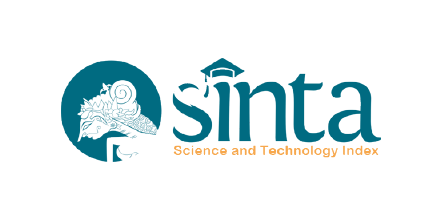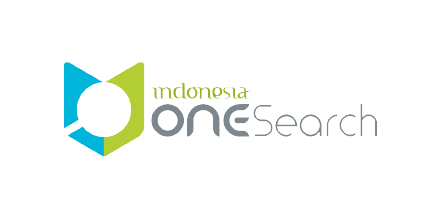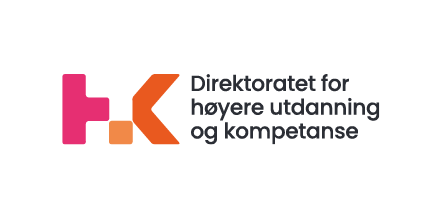Determining the Sexual and Reproductive Health Needs of Deaf People in Ghana
DOI:
https://doi.org/10.21776/ub.ijds.2015.02.01.01Abstract
This article examines how deaf people in Ghana prioritize their sexual and reproductive health (SRH) needs. The aim is to determine the most pressing SRH needs of the deaf community in Ghana and then propose appropriate measures to make SRH information and services accessible to them. The study was a SRH needs assessment with deaf people in Ghana, which utilized a participatory needs assessment method. A total sample of 179 participants took part in the study: 26 were focus group participants, 152 were survey respondents, and one person acted as a key informant. The study findings indicated that deaf people in Ghana have many SRH challenges, but the most pressing needs were related to barriers associated with communication and attitude of health professionals. To design SRH programmes that are deaf-friendly, there is the need to take into account the linguistic and cultural values of the deaf community.References
Achyar, A, (2008). Likert scale: Problems and suggested solutions. Retrieved May 23, 2010 from http://staff.blog.ui.ac.id/adac60/2008/07/17/likert-scale-problems-and-suggested-solutions/
Awusabo-Asare, K,. Biddlecom A., Kumi-Kyereme K., & Patterson, K., (2006). Adolescent sexual and reproductive health in Ghana. Results from the 2004 National Survey of Adolescents (Occasional Report, 22). Retrieved 9 September 2008, from http://www.guttmacher.org/pubs/2006/06/08/or22.pdf
Berry, L. B., (1995). Ghana, a country Study, US Government Printing Office Washington, DC. Chimi, J. C., & Russell, L. D. (2009). The Likert scale: A proposal for improving using quasi-continuous variables, Crystal 3, Retrieved 13 May, 2010 from http://proc.isecon.org/2009/4333/ISECON.2009.Chimi.pdf
Gilmore, D. G., & Campbell, D, M. (2005). Needs and capacity assessment for health education and promotion. (3rdEd.).Sudbury, MA: Jones and Bartlett.
Groce, N. E., (2004). Adolescents and youth with disability: Issues and challenges Asia Pacific Disability Rehabilitation Journal, 15 (2), 13-32, Retrieved 11 June, 2010 from http://www.aifo.it/english/resources/online/apdrj/apdrj204/adolescent.pdf
Groce, N. E., Yousafzai, A. K., and Maas, V. D. (2007). HIV/AIDS and disability: Differencesin HIV/AIDS knowledge between deaf and hearing people in Nigeria‘, Disability & Rehabilitation, 26(5), 367-371, Retrieved 10 March 2008 from http://www.dcdd.nl/data/1204643548082_HIV%20and%20deaf%20Study%20in%20Nigeria1.pdf
Ghana Statistical Service, Noguchi Memorial Institute for Medical Research, & ORCMacro (2004). Ghana demographic and health Survey 2003. Calverton, Maryland: Ghana Statistical Service, Noguchi Memorial Institute for Medical Research, and ORC Macro.
Finlayson, M. (2006). Assessing needs for services, In G. Keilhofner (Ed.), Scholarship in occupational therapy: Methods of inquiry for enhancing practice pp. 591-606.
FA. Davis, Philadelphian, PA.Hessburg, L., Awusabo-Asare, K., Kumi-Kyereme, K., Nerquaye-Tetteh, J. O., Yankey, F. Biddlecom, A., & Croce-Galis, M. (2007). Protecting the next generation in Ghana: New evidence on adolescent sexual and reproductive health needs, Washington, D.C: Alan Guttmacher Institute . Retrieved June 10, 2009, from http://www.guttmacher.org/pubs/2007/11/13/PNG_Ghana.pdf
Heuttel, K. L., & Ronstein, W. G. (2001). HIV/AIDSknowledge and information sources among the deaf and hearing college students, AmericanAnnals of the Deaf, 146 (3), 280-286, Retrieved May 20, 2007, from http://web.ebscohost.com.proxy.cc.uic.edu/ehost/pdfviewer/pdfviewer?sid=aa2ed781-5197-45a4-be70-8b88b19e8d35%40sessionmgr4&vid=4&hid=25
Job, J., (2004). Factors involved in the ineffective dissemination of sexuality information to individuals who are deaf or hard of hearing, American Annals of Deaf, 149(3),264-273, viewed May 11, 2007, from http://web.ebscohost.com.proxy.cc.uic.edu/ehost/pdfviewer/pdfviewer?sid=755f43d5-4bf0-4801-a582-36a9cab8f3fc%40sessionmgr10&vid=4&hid=25
Jones, G. E., Renger, R., & Firestone, R. (2005). Deaf community analysis for health education Priorities, Public health nursing 22(1), 27-35, Retrieved March 20, 2008 from http://web.ebscohost.com.proxy.cc.uic.edu/ehost/pdfviewer/pdfviewer?sid=e76d4591-3d59-4c73-abb4-684b2b5a11c0%40sessionmgr11&vid=4&hid=25
Margellos-Anast, H.,Hedding, T.,Perlman, T.,Miller, L.,Rodgers, R.,Kivland, L., DeGutis, D.,Giloth, B. E.,&Whitman, S. (2005). Standardized comprehensive health survey for use with deaf adults‘ American Annalsof the Deaf, 150(4), 388-396, Retrieved August 10, 2008, from http://web.ebscohost.com.proxy.cc.uic.edu/ehost/pdfviewer/pdfviewer?vid=3&hid=25&sid=ffaeeb42-40ed-49d6-81e0-ecd946880168%40sessionmgr13
Mindess, A. (2006). Reading between the signs: Intercultural communication for sign language interpreters.Boston, MA: Intercultural Press.
Mprah, W. K., (2011). Sexual and Reproductive health needs assessment with deaf people in Ghana, PhD Dissertation, Department of Disability Studies, University of Illinois, at Chicago, Chicago.
National Population Council, (2000). Adolescent reproductive health policy‘,Ghana National Population Council, Accra, Ghana.
National Population Council, (1994). National population policy. Ghana National Population Council, Accra, Ghana.
Prilleltensky, O. (2004). Motherhood and disability: Children and choices’, Palgrave Macmillan, New York
Slikker, J. (2009). Attitudes towards people with disabilities in Ghana,Accra, Ghana: VSO Ghana.
United Nations Department of Public Information (1995). ICPD‘94: Summary of the program of action, viewed12 May, 2009, from http://www.un.org/ecosocdev/geninfo/populatin/icpd.htm#intro
Watkin, B. R., & Altschuld, J. W. (1995). Planning and conducting needs assessments. A practical guide, Sage Publications, Thousand Oaks, CA.
Wilson, A., & Monaghan, L. (2006). HIV/AIDS and the Deaf community, International Journal of Deaf Studies, 22(1), 1-10.
World Health Organization (2009). Promoting sexual andreproductive health for persons with disabilities WHO/UNFPA guidance note‘, viewed 19 June 2010, from http://www.unfpa.org/webdav/site/global/shared/documents/publications/2009/srh_for_disabilities.pdf
Zola, K. I. (1994). Towards inclusion: The role of people with disabilities in policy and research issues in the United States –A historical and political analysis, In M. Roux & M. Bach, (Eds.). Disability is not measles: New research paradigms in the disability institutepp. 49-66, Roeher Institute , Ontario, NY.
Downloads
Published
How to Cite
Issue
Section
License
Copyright (c) 2015 Mprah Kwadwo Wisdom

This work is licensed under a Creative Commons Attribution-NonCommercial 4.0 International License.















